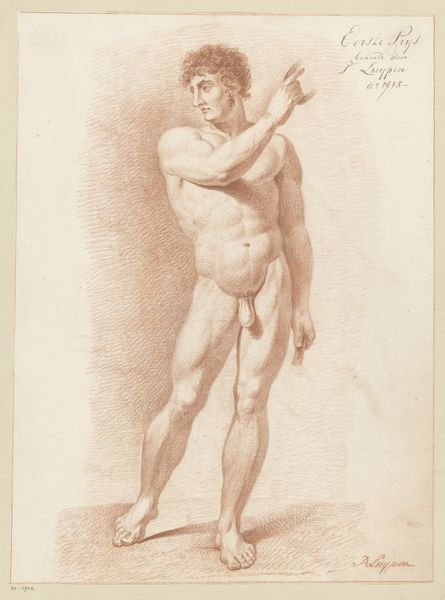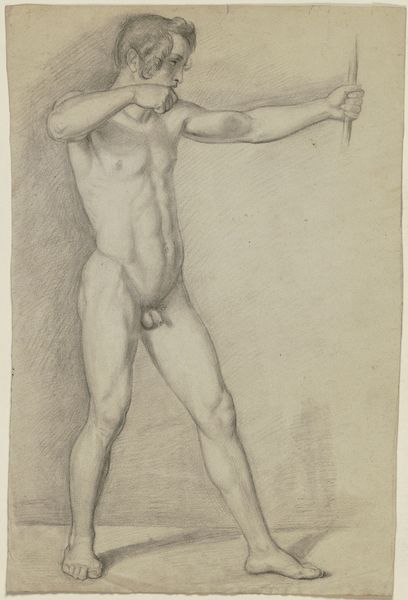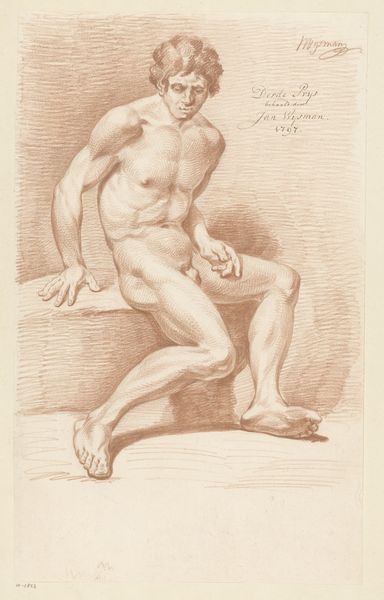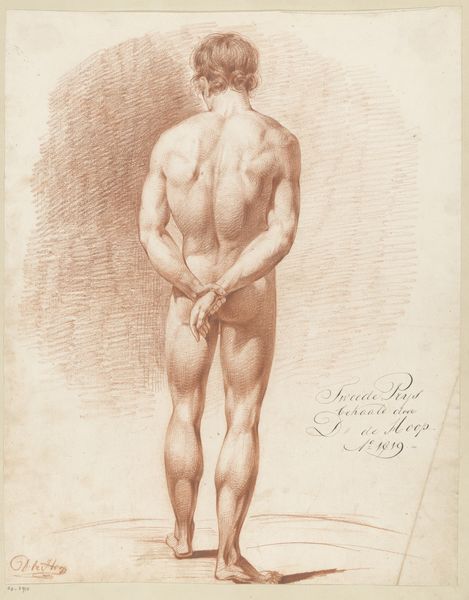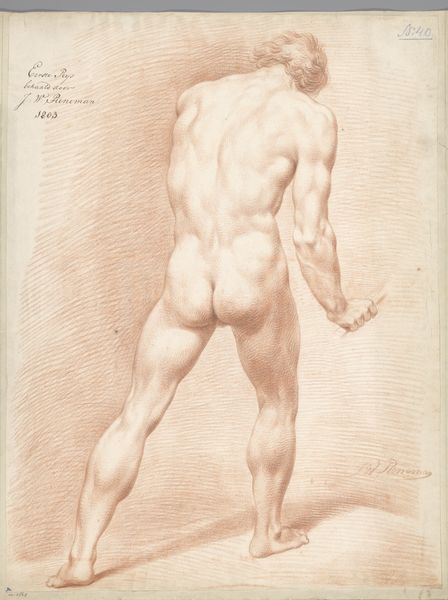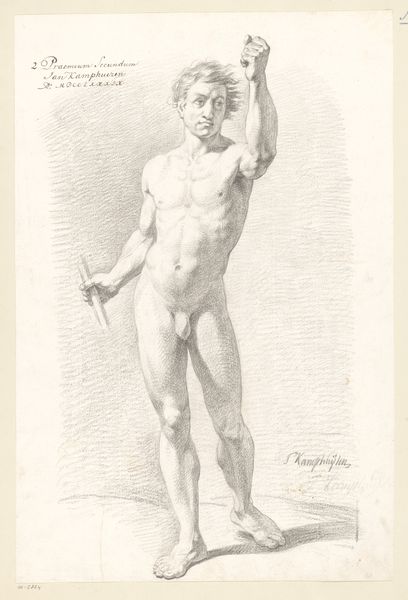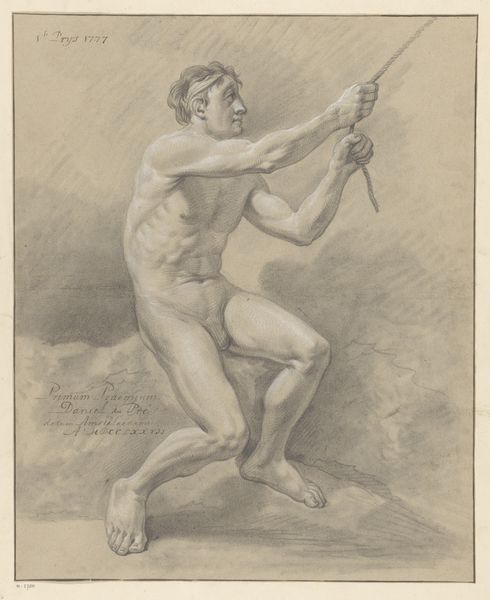
drawing, pencil
#
portrait
#
pencil drawn
#
drawing
#
charcoal drawing
#
pencil drawing
#
classicism
#
pencil
#
portrait drawing
#
academic-art
#
nude
Dimensions: height 520 mm, width 404 mm
Copyright: Rijks Museum: Open Domain
Editor: So, here we have "Standing Male Nude, Seen from the Front (2nd prize 1816)," likely from 1816, by Johannes Donker. It's a pencil drawing, rendered in sanguine. I’m struck by the pose, so poised yet also vulnerable. What leaps out at you when you see this piece? Curator: Vulnerability is an interesting take! I see that too, but also an incredible dedication to form. I wonder what he dreamt of while drawing him, Donker I mean. Perhaps he aspired to reach the ideals of classical art. But do you notice how the pose is both dynamic—with that arm pointing skyward—and also incredibly static? It is so classically, self-assuredly calm. Editor: I see what you mean! It is a very traditional pose, yet his slightly tilted head adds a touch of humanity, I suppose. Why do you think Donker chose this almost theatrical gesture, then? Curator: Ah, theatrical! I love that word choice! Yes, it has the ring of youthful declamation, doesn't it? Perhaps, he was inspired by the actors of the time, their exaggerated gestures. Art often mirrors its surrounding society, like actors mirroring the audience back at themselves. Or it is that very need to 'find one's way' expressed by a youth with a cane, the artist using himself as his first point of inspiration for everything in life, an artistic awakening. Editor: That's such a cool idea, an artistic awakening. I hadn’t thought of it that way, and it makes this piece far more relatable, even with its classical influences. Curator: Exactly! Finding those personal connections—that’s what makes art truly alive, even after centuries! We both learned that today.
Comments
No comments
Be the first to comment and join the conversation on the ultimate creative platform.
